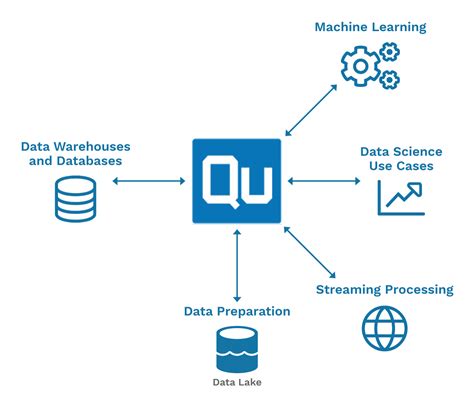5 Cloud Data Warehousing Tips

The realm of cloud data warehousing has evolved significantly over the years, transforming the way organizations store, manage, and analyze their data. As businesses continue to adapt to the ever-changing landscape of big data, the need for efficient, scalable, and secure data warehousing solutions has become more pressing than ever. Cloud data warehousing, with its promise of flexibility, cost-effectiveness, and advanced analytics capabilities, has emerged as a leading solution for enterprises seeking to unlock the full potential of their data.
Understanding Cloud Data Warehousing
Before diving into the tips for maximizing the benefits of cloud data warehousing, it’s essential to understand what cloud data warehousing entails. Cloud data warehousing involves moving data from various sources into a cloud-based repository, where it can be stored, managed, and analyzed. This approach leverages the scalability and on-demand nature of cloud computing to provide a flexible and cost-effective alternative to traditional on-premise data warehousing solutions.
Tip 1: Choose the Right Cloud Data Warehouse Platform
Selecting the appropriate cloud data warehouse platform is crucial for the success of your data warehousing strategy. Key considerations include the platform’s ability to handle large volumes of data, its support for real-time analytics, security features, integration capabilities with existing systems, and cost structure. Popular platforms such as Amazon Redshift, Google BigQuery, and Microsoft Azure Synapse Analytics each offer unique strengths and may be more or less suitable depending on your specific needs and ecosystem.
Tip 2: Implement Robust Security and Compliance Measures
Security and compliance are paramount in cloud data warehousing. Given the sensitive nature of the data stored in these platforms, ensuring that all data is encrypted both in transit and at rest, and that access controls are strictly enforced, is vital. Additionally, compliance with regulatory standards such as GDPR, HIPAA, and CCPA, among others, must be carefully considered. Leveraging the security features provided by cloud data warehouse platforms, such as access controls, auditing, and encryption, can help mitigate risks and ensure compliance.
Tip 3: Optimize Data Integration and Management
Effective data integration and management are critical for harnessing the full power of cloud data warehousing. This involves implementing efficient ETL (Extract, Transform, Load) processes to move data into the warehouse, managing data quality, and ensuring that the data is properly organized and indexed for fast query performance. Utilizing automation tools and services provided by cloud platforms can streamline these processes, reduce manual effort, and improve data freshness and accuracy.
Tip 4: Leverage Advanced Analytics and BI Tools
One of the primary benefits of cloud data warehousing is the ability to leverage advanced analytics and business intelligence (BI) tools to gain deeper insights into your data. Integrating your cloud data warehouse with machine learning services, data visualization tools, and BI platforms can enable sophisticated analysis, predictive modeling, and data-driven decision-making. By democratizing access to data insights across the organization, businesses can foster a culture of data-driven decision-making and innovation.
Tip 5: Monitor and Optimize Performance and Costs
Monitoring and optimizing the performance and costs of your cloud data warehouse is essential for ensuring that it operates efficiently and effectively. This includes tracking query performance, data storage costs, and computational resource utilization. Leveraging the cost management and monitoring tools provided by cloud platforms can help identify areas of inefficiency, optimize resource allocation, and implement cost-saving strategies such as rightsizing resources, using reserved instances, and taking advantage of free tiers and discounts.
Conclusion
Cloud data warehousing represents a significant leap forward in data management and analytics, offering the scalability, flexibility, and advanced capabilities that modern businesses need to thrive in a data-driven world. By selecting the right platform, prioritizing security and compliance, optimizing data integration and management, leveraging advanced analytics, and closely monitoring and optimizing performance and costs, organizations can unlock the full potential of cloud data warehousing and drive meaningful business outcomes through data insights.
What are the primary benefits of cloud data warehousing?
+The primary benefits include scalability, cost-effectiveness, advanced analytics capabilities, and the ability to handle large volumes of data from various sources.
How do I choose the right cloud data warehouse platform for my business?
+Consider factors such as scalability, support for real-time analytics, security features, integration capabilities, and cost structure. It’s also crucial to evaluate how well the platform aligns with your existing technology ecosystem and business needs.
What role does security play in cloud data warehousing?
+Security is paramount. Ensure that the platform provides strong encryption, access controls, and compliance with relevant regulatory standards. Regularly monitor and update security configurations to protect against evolving threats.
How can I optimize data integration and management in my cloud data warehouse?
+Implement efficient ETL processes, automate data management tasks where possible, and ensure that data is properly organized and indexed for fast query performance. Regularly review and refine your data integration and management strategies to improve data freshness, accuracy, and accessibility.
What advanced analytics capabilities can I leverage with cloud data warehousing?
+Cloud data warehousing enables the integration with advanced analytics and machine learning services, allowing for predictive modeling, real-time analytics, and data visualization. These capabilities can drive deeper insights into your data and support more informed decision-making.


